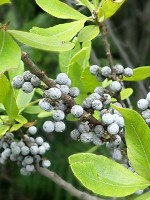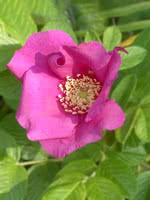Mon-Fri 9am - 5pm Mountain time
Rugosa Rose vs Northern Bayberry
Myrica pensylvanica
Rosa rugosa
NOT AVAILABLE THIS SEASON - MIGHT RETURN
NOT AVAILABLE THIS SEASON - MIGHT RETURN
Northern Bayberry makes an excellent hedge or feature shrub. It will retain its leaves in warmer climates but drops them in colder areas. They produce blue-grey berries that have a wax coating on them that can be used to make candles or soaps.
In colder hardiness zones the leaves turn an attractive orange to red colour in the fall, making it a striking addition to your landscape.
Northern Bayberry is native to Nova Scotia and tolerates both drought and wet conditions. It is also a nitrogen fixer that tolerates poor soil conditions.
Rugosa Rose is well-known for its incredible cold hardiness and disease resistance. This variety was grown from seed so naturally the flower colour should range between white and red. Try using the rose hips to make syrups or add flavor to existing fruit dishes and drinks.
Due to their overly thorny stems, Rugosa Rose is perfect for creating an impenetrable, deer resistant hedge. We recommend applying mulch during the summer months to retain moisture, cool the roots, and prevent weeds.
Northern Bayberry Quick Facts
Rugosa Rose Quick Facts
Toxicity: Warning: The wax from bayberry fruit is considered toxic and may be carcinogenic.

